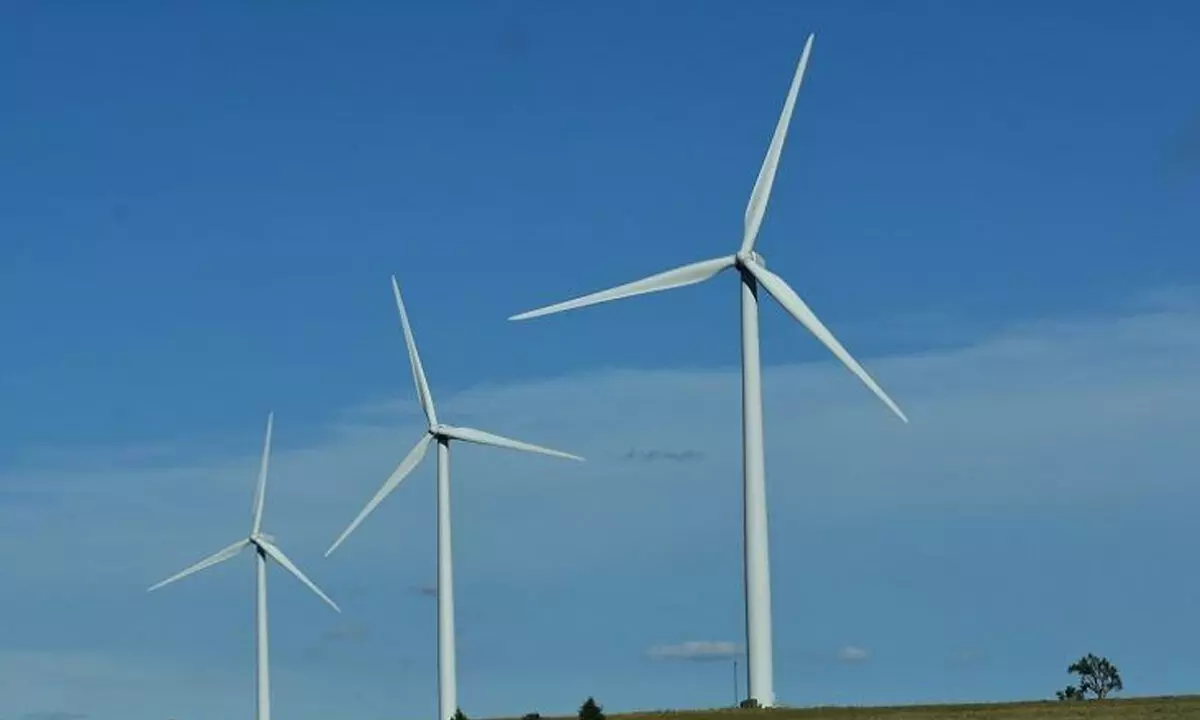Wind can energise India's green energy ambition
Having played a supplementary role to solar energy, wind energy can now play a pivotal role by generating energy round the clock to meet the growing renewable energy needs
image for illustrative purpose

Wind energy can play a crucial role in enabling India's green energy transition. According to the wind energy market outlook 2026 by Global Wind Energy Council (GWEC) and MEC Intelligence (MEC+), India can add another 23.7 GW of capacity within the next five years.
But to make this possible, necessary enabling policies, facilitative instruments, and the right institutional interventions have to be put in place.
Due to the pandemic, multiple projects could not take off or are running behind schedule. So, the main objective now is to kick-start the process so that India can seize a large opportunity to possibly lead the global shift to renewables.
As of March 2022, wind power constituted the majority of the renewable energy mix in India, with 37.7 per cent of cumulative installed capacity. But the current installed capacity is insignificant as compared to the overall potential that exists in the country.
Over 600 GW of onshore capacity is there at 120m hub height, with another 174 GW of fixed-bottom and floating offshore wind potential. These numbers indicate that a huge untapped wind energy potential exists that could advance India's clean energy transition.
Industry experts have urged the need for harnessing the full potential of India's wind capacity, including offshore to meet the need. As per the outlook, the market in India has been affected by the pandemic and following global supply chain disruptions.
However, Ministry of New and Renewable Energy (MNRE) tried to address this situation by granting a blanket timeline extension, which pushed the 0.7 GW of delayed projects to 2022.
Between 2021 and till recently, 2.65 GW of wind/solar hybrid (WSH) tenders and 3.5 GW of standalone wind projects were awarded.
Unlike the previous years, both standalone and hybrid projects were oversubscribed. This reinstates the ever-growing prominent role of wind energy for decarbonization and resilience building in the grid system, according to the report by GWEC and MEC+.
Having played a supplementary role to solar energy, wind energy can play a pivotal role by generating energy round the clock to meet the growing renewable energy needs. India can also emerge as global hub for wind equipment supplies as it has already attracted new suppliers and established its position as a leading exporter of very large turbines.
To harness the huge untapped opportunity in the Indian market, the outlook has made five broad recommendations and these include
Strengthen consensus and coordination between central and state governments
Promote technology exchange and alignment to the global wind supply chain
Exploit repowering opportunities that offer an efficient pathway for India to maximise productivity and socioeconomic benefits from sites already designated for onshore wind power production
Address the legacy challenges which have disrupted the development of wind energy
Finalise and implement offshore wind development roadmaps
It has also suggested that both standalone and hybrid wind projects should play a growing role to support the needs of the power sector's decarbonization as well as the availability and adequacy of reliable green power supply.
(Kalinga Nath is a Mumbai based senior journalist)

